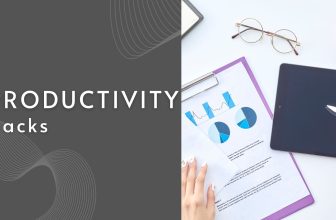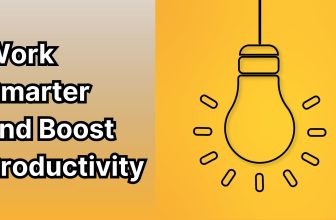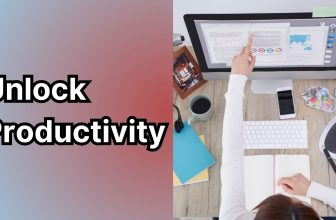Do you find yourself frequently struggling with poor time management? Perhaps you’re constantly missing deadlines, feeling overwhelmed by the number of tasks you need to complete, or experiencing stress due to inadequate time tracking. This can significantly impact both your work life and personal life, leading to decreased productivity and increased mental health concerns.
Bad time management can make it difficult to achieve our goals, whether in business or personal projects, and can lead to feelings of burnout and frustration. The good news is that anyone can improve their time management skills by learning how to effectively manage time and adopt better time management habits. In this article, I will discuss simple yet effective strategies to help you overcome the effects of poor time management and cultivate a more balanced approach to your day.
Identifying Your Time Management Pitfalls
You might have the will to improve your productivity, but without recognizing the habits and behaviors that are holding you back, it’s tough to make real progress. Let’s explore some common time management mistakes and how they quietly sabotage your work and personal life.
Recognizing Common Time-wasters
One of the biggest hurdles people face is poor time spent on non-essential activities. For instance, failing to keep a to-do list is like setting sail without a map—distractions become your daily visitors, and important tasks get lost in the noise. Another frequent issue is procrastination, which essentially means delaying what really matters and burying yourself under stress as deadlines approach.
You might think you’re being productive by multitasking, but the truth is, juggling too many things at once leads to missed deadlines and lower-quality results. Not to mention the extra stress it adds to your day. There’s also the trap of being “busy” rather than effective—filling your hours with action but accomplishing little that moves you closer to your goals. And let’s not forget the classic over-commitment, saying “yes” to everything and stretching yourself too thin, which leaves you exhausted and less productive in the long run.
Self-Assessment and Tracking
To truly manage time well, you need to be honest with yourself. Start by tracking how you spend time each day—time tracking apps or a simple journal can help you spot patterns and uncover hidden time drains.
Ask yourself: Are you focused on your real-life goals or just reacting to what’s urgent? Do you find your energy is drained by repetitive, low-value tasks?
It’s easy to brush off signs of poor time management, but the evidence is usually clear: decreased productivity, feeling overwhelmed, and missing targets are all red flags that your management skills need a refresh. By conducting a regular self-assessment, you can pinpoint what works, what doesn’t, and where you need to set firmer boundaries—or even find extra help.
Adopting Effective Time Management Techniques
Once you’ve identified the bad time management habits that hinder your day, the next step is to replace them with effective time management techniques that help you manage time effectively and boost your overall productivity. This transition starts by learning to set clear, realistic goals and priorities and implementing planning tools that keep your day organized and meaningful.
Setting Realistic Goals and Priorities
Setting goals is fundamental, but it’s essential that these goals are realistic and aligned with your true daily capacities and life goals. Overloading yourself can lead to poor time management skills and increase stress, making it even harder to complete tasks. One powerful method is to use the Eisenhower Matrix to categorize your tasks by urgency and importance, helping you focus on what truly moves you forward rather than just what is urgent.
This prioritization lets you spend your time well by dedicating your attention to high-impact activities first. The “Eat the Frog” strategy, which involves tackling your toughest or most dreaded task first thing in the morning, is another excellent way to cut through procrastination and make progress with purpose. Setting specific timelines for each goal also ensures you don’t fall into the trap of missing deadlines or wasting precious hours on low-priority work.
Implementing Robust Planning Tools
Even with clear priorities, good intentions can falter without a solid scheduling system. Time blocking is a highly effective technique that can transform scattered, distracted days into focused, productive sessions. By dividing your day into distinct chunks dedicated to particular activities (work projects, meetings, breaks, and even personal time), you regain control over your schedule and minimize wasted moments.
Digital calendar apps or planners can be a great ally here, allowing you to adjust your blocks as tasks take more or less time than expected. Another valuable tool is the Pomodoro Technique, which breaks work into focused intervals with short breaks in between, helping you maintain mental clarity and avoid burnout.
These time management strategies support a balanced approach to work and rest that enhances both work-life balance and output quality. Consistently using such tools will help you develop good time management habits that replace old, unproductive routines and set you on a path to success.
Maintaining and Improving New Habits
Regular Reviews and Adjustments
Developing good time management habits is just the first step. To truly benefit, you need to make regular reviews a part of your routine. By assessing your progress through weekly or monthly check-ins, you can determine which time management techniques are working and which need tweaking.
This practice helps you stay on top of your priorities and avoid slipping back into poor time management patterns. Adjust your schedule or tools as needed—maybe a certain time blocking style needs more flexibility, or your daily to-do list requires shortening to better match your actual capacity.
The ability to iterate and adapt will ensure your new habits are sustainable and continue improving your efficiency over time.
Staying Motivated
Maintaining motivation is critical to overcoming the effects of poor time management. Celebrating small wins along the way keeps your momentum alive and reinforces positive behaviors.
Consider stacking new habits with existing routines to make them easier to maintain, such as reviewing your daily plan right after your morning coffee or winding down with a review of your accomplishments each evening. Remind yourself of the benefits: reduced stress, better work-life balance, and the satisfaction of moving steadily toward your goals. When motivation dips, reflect on how managing your time more effectively has already improved your mental clarity and freed up moments in your day for what truly matters.
Keeping a flexible mindset and rewarding your progress will help you not just fix your bad time management habits but sustain good ones for the long haul.
Conclusion
Improving your time management isn’t about striving for perfection; it’s about making small, consistent changes that gradually create a big impact. Recognizing your poor time management habits is the essential first step—don’t hesitate to engage in honest self-assessment.
Set realistic goals, prioritize tasks that truly matter, and leverage planning tools to keep yourself accountable. Regular reviews and adjustments will ensure you stay on track, while celebrating progress keeps your motivation alive.
The benefits are undeniable: reduced stress, increased productivity, and a better balance between work and personal life. Start today—choose one new strategy, implement it, and witness how effective time management can transform your day, your work, and your life.
FAQ
How can I identify my specific bad time management habits?
To identify your specific bad time management habits, start by tracking how you spend your time daily, noting distractions and delays. Recognize patterns such as procrastination, ineffective prioritization, multitasking, failing to follow to-do lists, or poor scheduling.
Reflect on feelings of being overwhelmed or rushed, and prioritize tasks using tools like the Eisenhower Matrix for clarity. Review meeting habits and look for time-wasting activities, such as excessive social media use or unproductive meetings.
By analyzing these signs, you can pinpoint habits that need change.
What are quick and effective strategies to set realistic and achievable daily goals?
Quick and effective daily goal-setting strategies include creating SMART goals—Specific, Measurable, Achievable, Relevant, Time-bound—to ensure clarity and feasibility. Limit the number of daily goals to avoid overwhelm.
Use time blocking to schedule goals efficiently. Write down goals to enhance commitment and track progress. Turn recurring goals into habits for long-term success.
How do I prioritize tasks when facing multiple deadlines or urgent demands?
To prioritize tasks, start by listing all tasks and identifying urgent vs. important ones. Use methods like the ABCDE method or Most Important Task (MIT) to focus on critical tasks first. Break large tasks into smaller chunks and communicate effectively with your team to manage deadlines.
Which time management tools or techniques are best for improving productivity and avoiding distractions?
The best time management tools for improving productivity and avoiding distractions include task management apps like Todoist and Microsoft To Do, which help prioritize tasks and focus on daily goals. For detailed time tracking, tools like Hubstaff, Memtime, and Rize offer automated tracking, reporting, and insights to optimize workflow and minimize distractions.







